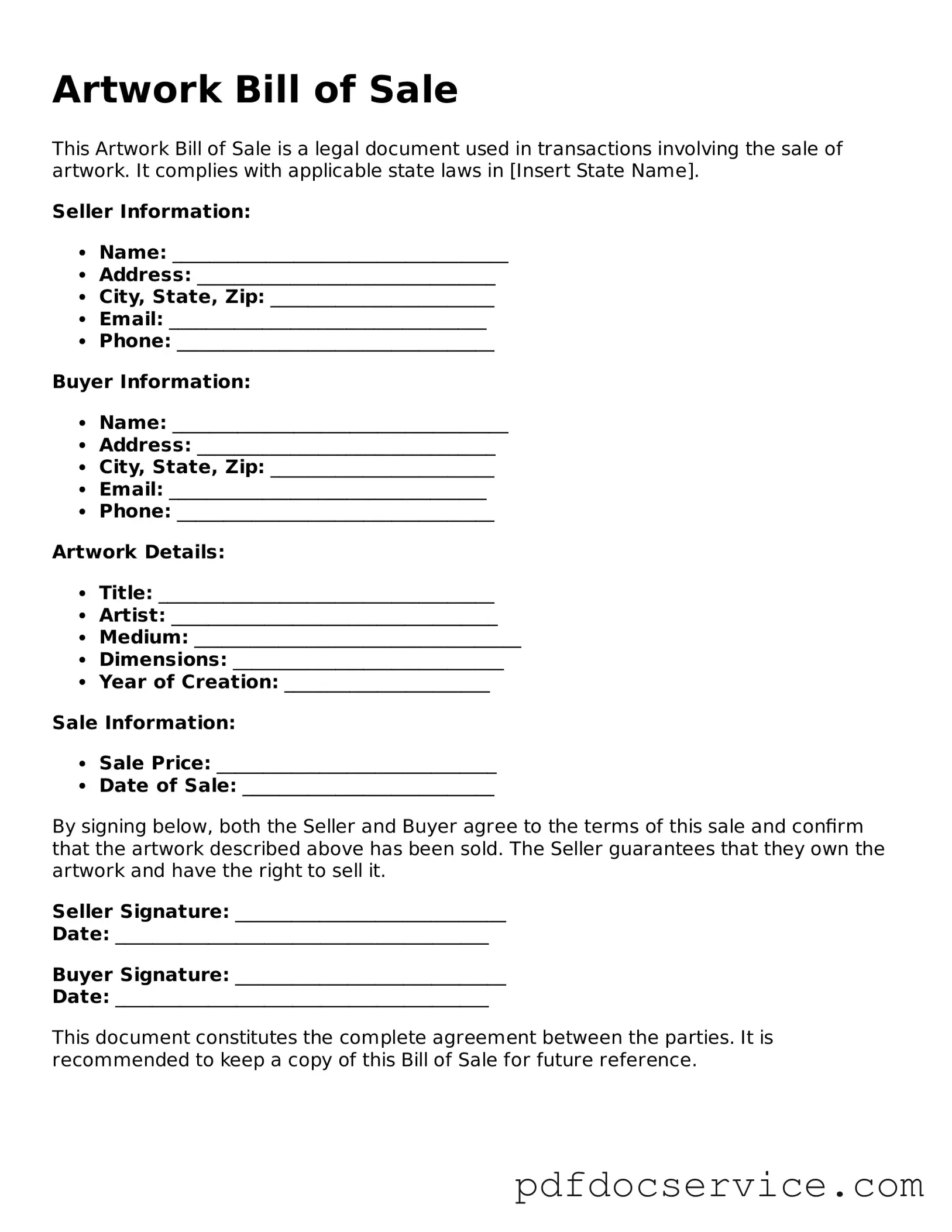What is an Artwork Bill of Sale?
An Artwork Bill of Sale is a legal document that serves as proof of the transfer of ownership of a piece of artwork from one party to another. This form details essential information about the artwork, the seller, and the buyer, ensuring that both parties have a clear understanding of the transaction.
Why is an Artwork Bill of Sale important?
This document is crucial for several reasons:
-
It provides legal protection for both the buyer and seller by documenting the sale.
-
It helps establish the provenance of the artwork, which can be important for future resale or valuation.
-
It can assist in resolving disputes regarding ownership or the terms of the sale.
A standard Artwork Bill of Sale usually includes the following information:
-
The names and contact information of the buyer and seller.
-
A detailed description of the artwork, including title, artist, medium, dimensions, and any identifying marks.
-
The purchase price and payment method.
-
The date of the transaction.
-
Any warranties or representations made by the seller regarding the artwork.
Can I create my own Artwork Bill of Sale?
Yes, you can create your own Artwork Bill of Sale. However, it’s important to ensure that all necessary information is included and that the document is clear and unambiguous. Many templates are available online, which can serve as a helpful starting point.
Is an Artwork Bill of Sale legally binding?
Yes, an Artwork Bill of Sale is legally binding as long as it is properly executed by both parties. This means that both the buyer and seller must sign the document, indicating their agreement to the terms outlined within it.
Do I need a witness or notary for the Artwork Bill of Sale?
While a witness or notary is not always required, having one can add an extra layer of legitimacy to the document. Some buyers or sellers may prefer to have the bill notarized, especially for high-value transactions, to ensure that the signatures are verified.
What if the artwork is damaged after the sale?
The Artwork Bill of Sale typically includes terms regarding the condition of the artwork at the time of sale. If the artwork is damaged after the sale, the responsibility usually falls on the buyer. However, if the seller made specific representations about the condition, they may be liable if those representations were false.
Can I use the Artwork Bill of Sale for digital art?
Yes, an Artwork Bill of Sale can be used for digital art as well. The document should include specific details about the digital file, such as the file format, resolution, and any rights associated with the purchase, such as whether the buyer has the right to reproduce the work.
How do I store my Artwork Bill of Sale?
It’s important to keep the Artwork Bill of Sale in a safe place. Digital copies should be stored securely on a computer or cloud storage service, while physical copies should be kept in a safe or file folder designated for important documents. Having both a digital and physical copy can be beneficial.
What should I do if I lose my Artwork Bill of Sale?
If you lose your Artwork Bill of Sale, it’s advisable to try to obtain a replacement from the seller if possible. If that’s not feasible, you can create a new document that outlines the details of the original transaction, but be aware that this may not have the same legal standing as the original.
